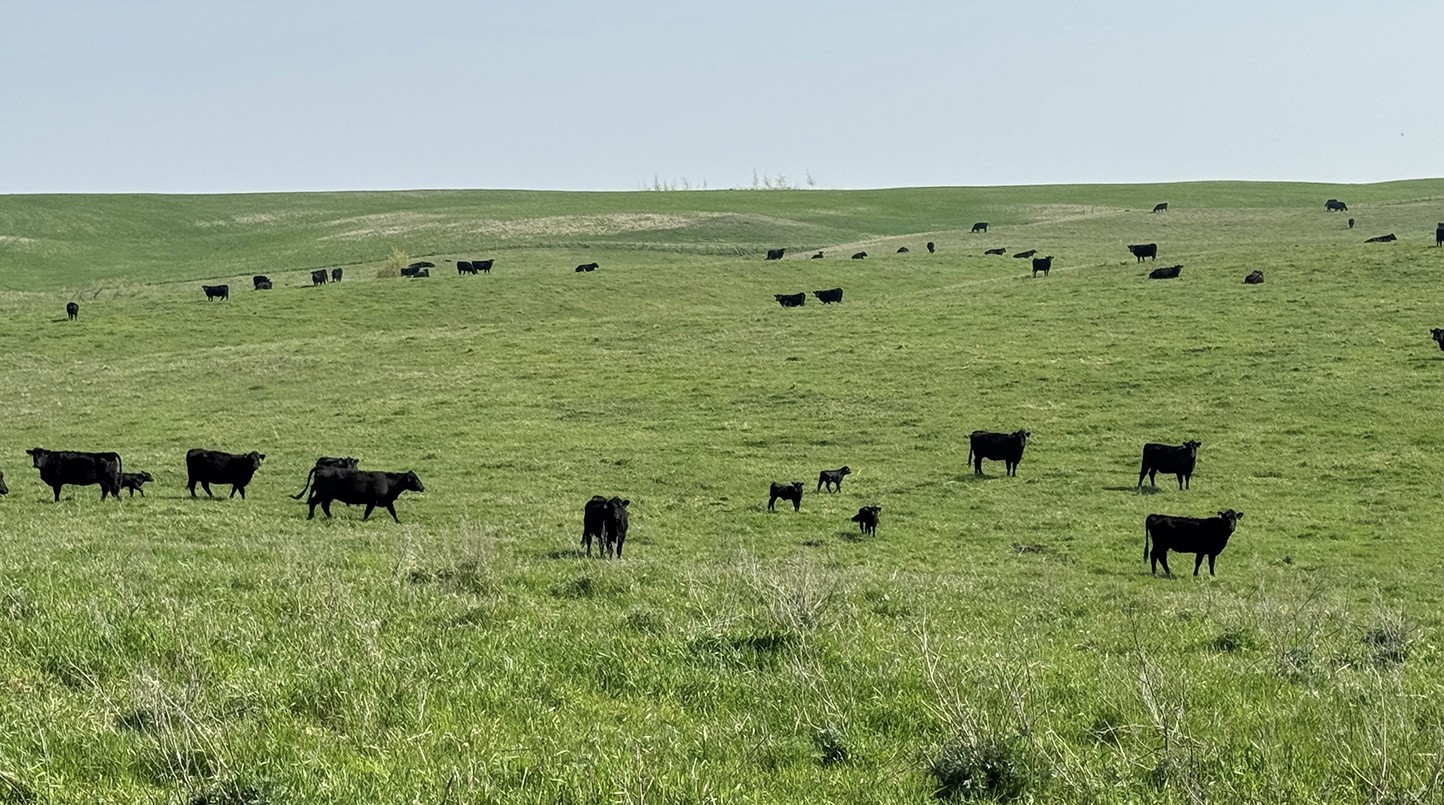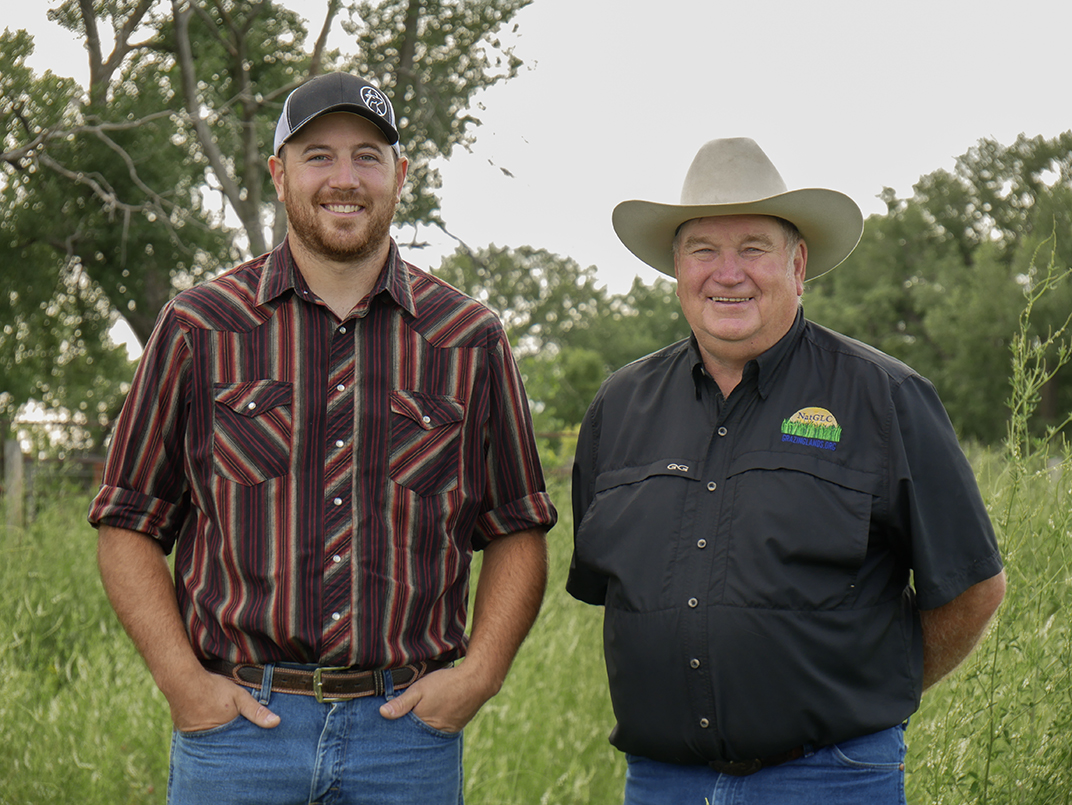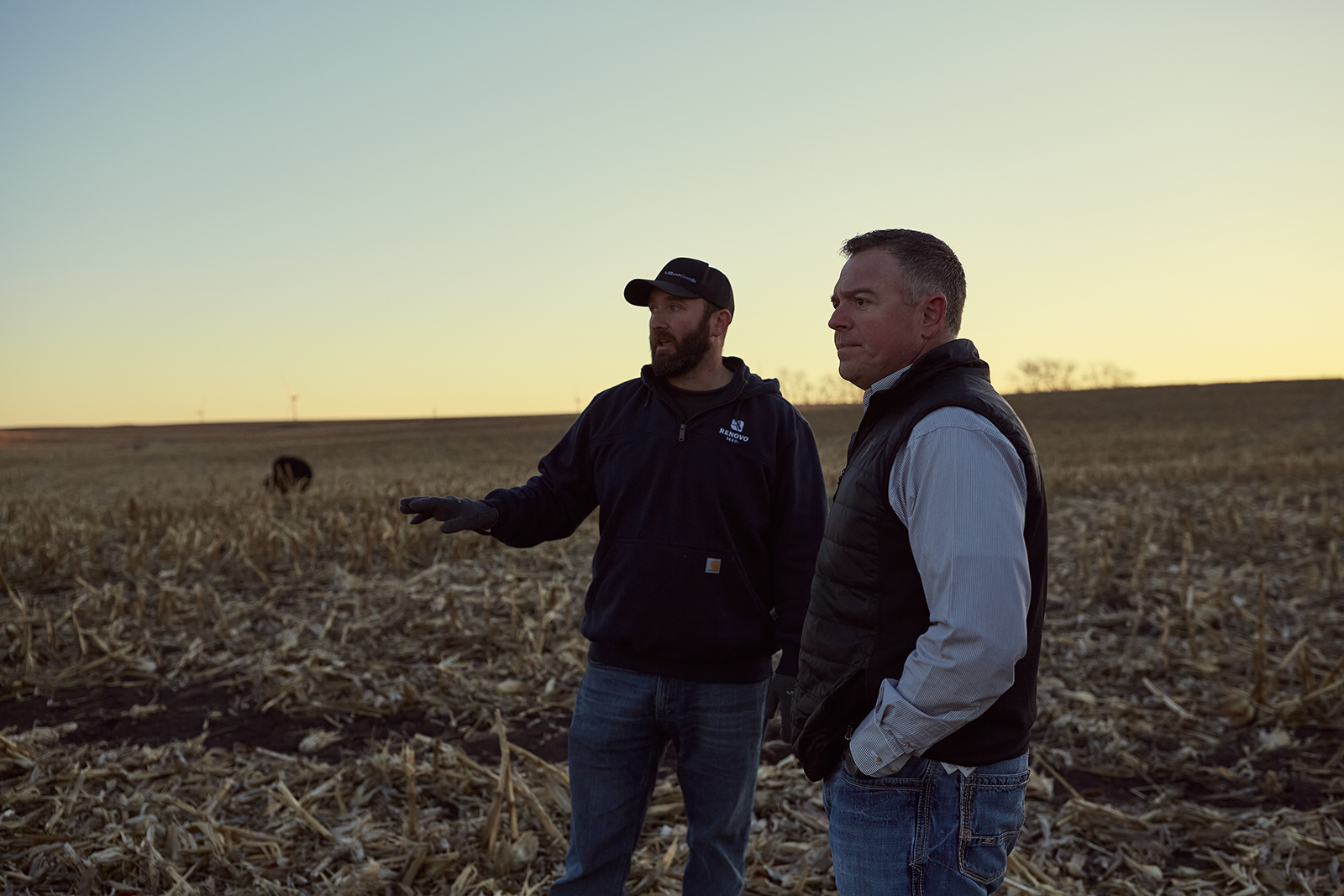- Agriculture Sustainability
- May 14, 2024
AgSpire Partners with SDSU & Others to Advance Resilience on Cattle Ranches

By Lura Roti for AgSpire
Recognizing the positive role cattle play in advancing sustainability, companies and other agriculture stakeholders are increasingly investing in efficiency and resiliency at the ranch level. This gives new opportunities to ranchers to make improvements to their land and herds.
The world’s largest fast-food chain is one such company. McDonald’s wants to support cattle producers in their efforts to increase overall herd efficiencies, while at the same time enhancing soil and grassland health.
To accomplish this, McDonald’s teamed up with AgSpire to provide cattle producers with expert advice, resources and funding through the Ranching for the Future program, offered through AgSpire’s SustainAg Network.
“It’s so rewarding to walk alongside cattle producers in their quest for improvement,” explained food animal veterinarian, Dr. Kristina Porter.
Porter is among the team of SustainAg Technical Advisors at AgSpire who support producers by understanding the operations’ existing management practices and overall herd health to determine if there are any operational efficiencies that could be gained through enhanced genetics or implementation of other customized management practices, like interseeding rangeland or pastures with native or non-native perennial grasses.
“Cattle margins are pretty small, so to be able to suggest customized practices that a producer can try out with less risk because the costs are covered is pretty exciting,” Porter said.
Third-generation North Dakota rancher Karl Bartholomay agreed. For decades, Karl and his dad, Keith, have focused on implementing conservation practices on more than 4,000 acres of cropland, native range, river bottoms, and pastures that make up Bartholomay Kattle Kompany near Sheldon, North Dakota.

And their efforts have been rewarded. As their grassland and soil health have continued to improve, so have overall herd health and efficiency. And another bonus – today an abundance of wildlife now call their ranch home.
“As our rotational grazing intensified, we began to see more wildlife,” Karl said. “It is fun to see the cows interact with the pheasant, deer, turkeys, and grouse that wander through while they are grazing. It is nice to see that by implementing regenerative practices we are not only helping our own operation – the land and cattle – we are helping the whole ecosystem. Everything goes hand-in-hand.”
In 2023, the Bartholomay Kattle Kompany was recognized in North Dakota for their sustainability efforts with the national Leopold Conservation Award.
Karl said he and his dad will continue to do more as funding allows. But finding funds for conservation practices has been a challenge. “We discovered that most cost-share programs are for ranchers who were just getting into conservation. And then we connected with AgSpire and their SustainAg Network,” Karl said.
The Bartholomays recently enrolled in the Ranching for the Future program. After Porter and an agronomist visited the ranch, they determined that interseeding pastures with perennial legumes would further enhance the ranch’s grassland health.
“Interseeding is something we have wanted to do, because it could make a big jump in species diversity in a short timeframe. But the cost is something we need to consider because this ranch needs to support my family and my mom and dad,” explained Karl, who together with his wife, Becca, have two young daughters, Olivia, 4, and Elaine, 9 months.
Connecting conservation-minded agriculture producers, like the Bartholomays, with voluntary, incentive-based grant and private-market sustainability programs is the focus of AgSpire’s SustainAg Network.
“In agriculture, the greatest resources we have are our soil and our kids who we want to be able to return to the farm or ranch,” Porter said. She explained regenerative practices – like increasing grassland diversity – have a positive impact on soil health, while also improving the overall health of grazing cattle. “Cattle thrive on grass because every species of grass matures at a different time. By increasing species diversity, there will be quality forage for cattle throughout the grazing season,” Porter said.
Interseeding perennial grasses also improves an operation’s overall resiliency, explained Hector Menendez, Assistant Professor and SDSU Extension Livestock Grazing Specialist.
“Re-establishing grasslands on marginal agriculture acres or diversifying existing grasslands through perennial plantings and different grazing management practices ultimately helps build resilience to weather extremes like drought or extreme moisture on a ranch,” said Menendez, who works on the Grass is Greener program through a partnership between AgSpire and South Dakota State University.
The partnership began after SDSU received an $80 million U.S. Department of Agriculture grant – The Grass is Greener on the Other Side: Developing Climate Smart Beef & Bison Commodities.
Hector and a team of SDSU researchers are tasked with reviewing cattle producers’ diverse grassland management practices and measuring the actual output of methane by cattle, as well as grassland’s ability to sequester carbon. “Today’s livestock producers face increasing public scrutiny because animal agriculture is often cited as a major contributor to greenhouse gas emissions. However, this negative perception does not take into account the carbon sequestration benefits of grazing livestock,” reads the grant explanation on the SDSU website.
SDSU partnered with AgSpire to help with this program in two ways. First, through its SustainAg Network, AgSpire connects with producers, helping them select and implement practices that align with their land and management goals. Then, AgSpire helps provide incentives and premiums to producers that implement regenerative practices through the program.
Producers like Minnesota cattleman, Mitch Pederson. Pederson is currently utilizing the Grass is Greener program to fund the transition of about 100 row crop acres on his farm to forage for his cow/calf herd. Starting the transition by seeding a forage cover crop mix to graze this fall, Pederson plans to follow the cover crops with a perennial forage seed mix.

Because his farm is located in the Prairie Pothole region, Pederson’s ultimate goal is to transition all his row crop acres to perennial grasses and use his cattle to harvest them. He is using the Grass is Greener and other SustainAg Netwok programs to help cover the costs. AgSpire offers short-term contracts – one to five years, depending on the practice – so that producers like Pederson can make management decisions based on how the program outcomes align with their overall goals.
“I love the perennial systems for resiliency – perennial grasses weather the extremes much better than row crops,” Pederson said. “With perennial grasses, I no longer need to fight against Mother Nature. When we get rains, the grasses will help with water infiltration and when we are faced with drought, the perennial roots will tap into water below the soil’s surface.”
Weathering extremes is important. He explained that in the first five years after purchasing the farm from his great uncle, the farm saw both the wettest and driest years on family record.
In addition to helping cover the costs associated with establishing the perennial forages, AgSpire connected him with one of their Technical Advisors to maximize success. And because Pederson is enrolled in the Grass is Greener program, he will also receive a per-head premium for cattle that graze on the pastures where he implemented the practice.
“Increasingly, we are seeing corporations who want to invest in the positive environmental outcomes that result when cattle are raised sustainably. It is an opportunity for conservation-minded cattle producers to receive a premium for their practices,” explained Ryan Eichler, director of producer programs at AgSpire and a Lake Preston, South Dakota cattle producer.
Grass is Greener and Ranching for the Future are two of six programs offered by AgSpire through the SustainAg Network. AgSpire continues to expand its program offerings to farmers and ranchers through new partnerships, like these with McDonald’s or SDSU.
Learn More:
 Visit AgSpire.com
Visit AgSpire.com